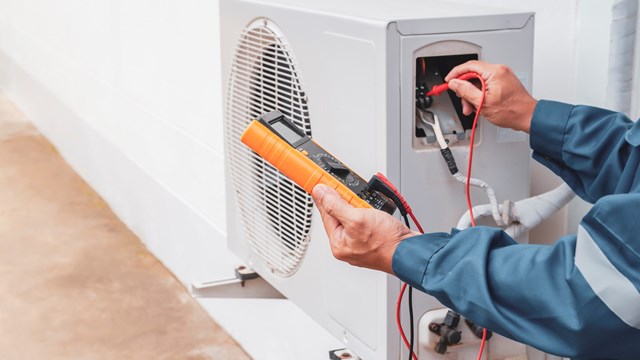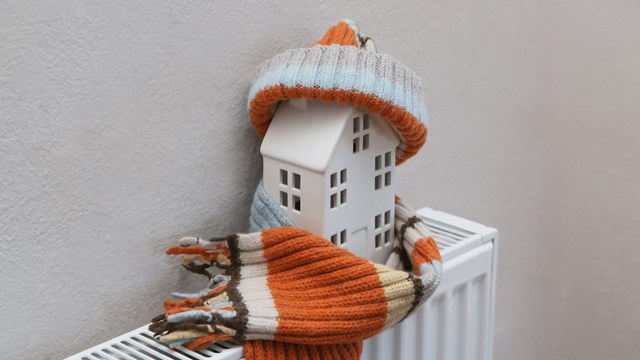The eyes may be the windows of the soul, but windows are the eyes of your home, looking out onto the world and letting in air and light. More than just plain old sheets of ordinary glass, today's windows are loaded with features designed to increase fuel efficiency, block noise, cut down on cleaning time, and improve your view.
Unless you happen to live in a pre-war building with temperamental old-school iron window weights and solid-oak sashes, chances are your apartment's windows are thoroughly modern assemblages of metal and glass that you don't think much about - unless one gets stuck or your cat claws the screen to smithereens. There's a new generation of windows on the market, however, and their makers are betting that builders, developers, and boards looking to replace old, outdated windows will embrace their new-and-improved portals - even if they cost a bit more than the old wood-and-glass variety.
A couple of times a year, many boards find themselves having to pony up funds to hire a professional window-cleaning crew to rappel up the side of their building, squeegees in hand, to scrub and sponge away the crud that accumulates so readily in the smoggy, gritty New York atmosphere.
Now, a new species of windowpane may reduce the need for regular scrubbing. Self-cleaning glass may sound like an oxymoron, but a number of glass companies are now offering panes possessing so-called "photocatalytic" properties. Essentially, photocatalytic windowpanes use the sun's ultraviolet (UV) emissions to trigger a small thermal reaction that continuously breaks down and loosens dirt particles, preventing them from accumulating on window surfaces and making things dingy. Since UV rays are plentiful even when it's overcast, the photocatalytic process works all day.
In addition to cooking the dirt off, self-cleaning glass is also "hydrophillic," meaning that when sprayed with water or rinsed by the rain, any undissolved bits of grunge clinging to the pane are sluiced away. While there are several water-repelling, dirt-resisting products on the market designed to be sprayed onto glass surfaces after they're installed, they usually only offer temporary solutions to the streaky, greasy reality of life in the city.
Interestingly, photocatalytic/hydrophillic glass takes a few days of steady UV exposure to "charge" after installation. Once it's juiced up, however, self-cleaning glass pretty much takes care of the rest. Reducing or even eliminating the need for constant professional attention makes self-cleaning glass a very attractive option for boards facing the expense and commitment of window replacement in their building. The extra cost of the newfangled glass may be offset by the long-term savings and reduced headaches from not having to hire cleaners.
"Time is valuable," says Paul Gore, business segment leader for building products at Pilkington North America, the Toledo, Ohio based company that first introduced self-cleaning glass to the general market. "With self-cleaning glass, you can spend less time cleaning windows and more time working on other projects and activities."
In any big city, the threats of vandalism and burglary, and today terrorism, are never too far away. To reduce the incidence of smash-and-grab break-ins and the risk of serious injury from flying glass in case of earthquake, fire, or explosion, several glassmakers have turned their attention and research dollars to developing "safety films" that they say can hold shattered glass together in even the worst circumstances. "Many people are taking standard windows, or traditional windows and improving them," says Craig Berlin, president of Chute Master Indoor Environmental Services, Inc. in Union, New Jersey.
For example, 3M - the company which brought the world Post-It stickies and Scotch Tape - has developed a line of tough, transparent polyester films that, when applied in multiple, "microthin" layers to windows, will hold shattered glazing together and prevent shards of razor-sharp glass from flying in all directions. Film-coated glass can be purchased ready-made, or applied to pre-existing windows.
In the post-September 11th age, the first thing that comes to mind in a discussion of "impact-resistant" or "shatterproof" glass is, of course, terrorism. Treated glass can hold its own against storms and blowing debris, as well as summer heat and sub-zero winter temperatures. The right kind of film treatment can cut a building's heating and cooling costs, help even out the temperature of a building with multiple exposures, and filter out nearly all the sun's UV rays, which can fade furniture, damage skin, and age carpet and wall treatments. According to Berlin, "There's always a side of a building that catches the sun - a hot side and a cold side. What you can do is apply a film to the problem areas and help balance out the building."
Berlin says that installation of special films on existing windows is a relatively simple matter. An authorized installation expert applies a chemical treatment containing UV blocker and other climate control properties to the exterior of the window, and then applies the microthin film, "like wallpaper cut to the proper size." According to Berlin, buildings opting to apply safety tints to their windows may even qualify for better insurance premiums and incentives for making their building safer and more energy-efficient.
Car horns, sirens, construction noise, and the neighbor's loud music are often seen as part and parcel of city life. This need not necessarily be the case, however. While a single pane of glass filters out exactly .003 percent of ambient noise (or at least seems to filter about that much), some newly-designed, re-engineered windows can cut up to 95 percent of the din, without interfering with views, function, or aesthetics.
The secret is to have a "buffer zone" of air between two sheets of glass, according to the pros at Cityproof Interior Window Systems in Long Island City. The treated glass in the new glass combined with dead air between the panes not only absorbs sound, but also has the fringe benefit of improving heat retention in the cold winter months and deflecting the sun's rays in the summer, making your apartment not only quiet, but comfortable.
In the typical noise-reduction window replacement project, a new set of panes is installed behind the existing panes to create the buffer zone in between. "We build a second window inside the existing window, as long as the window that's already there is operable," says Michael Damelin, president of Cityproof. "And we don't necessarily have to do an entire building all at once; we can do part of a building, or even an individual unit." And that's certainly good news for people with two sides of their master bedroom facing busy streets.
While some are content so long as their windows open and close, don't break, and keep the bugs out, most people would like a little more from the holes cut in their walls. Boards, managers, and building owners have a lot more to choose from these days than just what kind of screen to install, or which cleaning company to use. Done all-out, it's entirely possible to outfit a building with windows that don't need to be cleaned, can't be broken, and will save - or even make - money for its inhabitants.







Leave a Comment